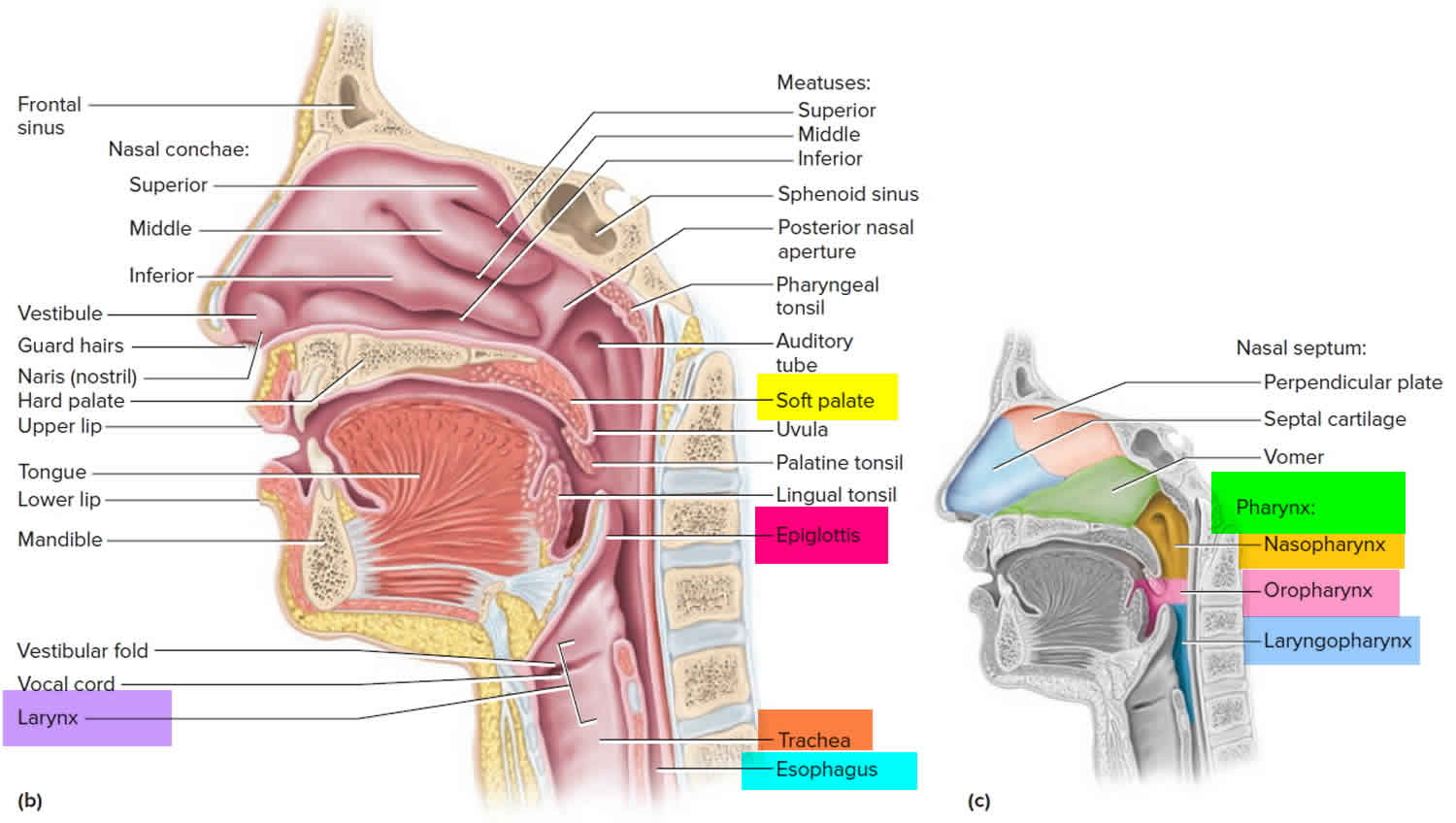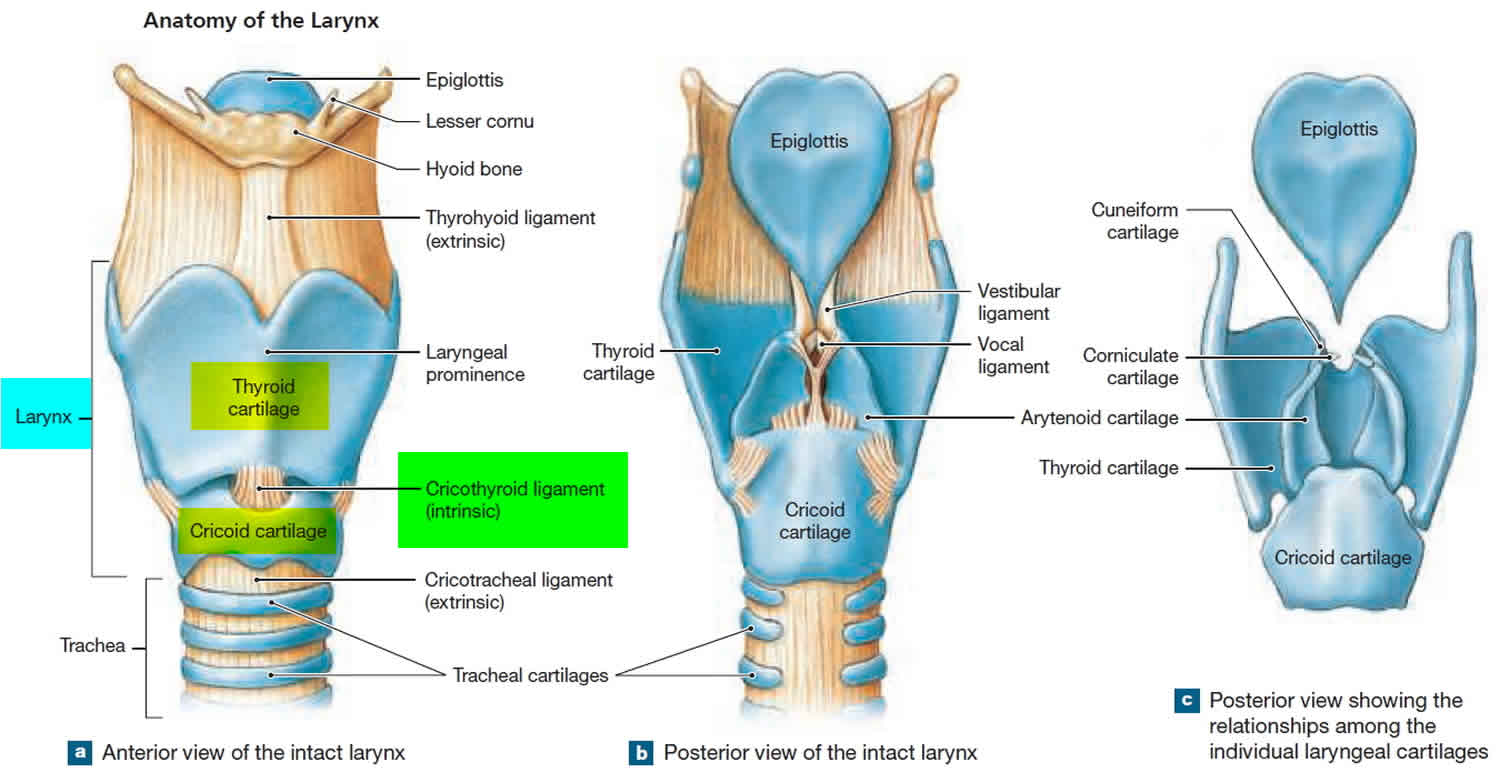Contents
What is stridor
Stridor is an abnormal harsh, variable, high-pitched breathing sound 1. Stridor is caused by a blockage in the throat or voice box (larynx). Stridor is most often heard when taking in a breath. Stridor may be a sign of an emergency. See your doctor right away if there is unexplained stridor, especially in a child. Children are at higher risk of airway blockage because they have narrower airways than adults. In young children, stridor is a sign of airway blockage. Stridor must be treated right away to prevent the airway from becoming completely closed. The airway can be blocked by an object, swollen tissues of the throat or upper airway, or a spasm of the airway muscles or the vocal cords.
Typically, stridor is produced by the abnormal flow of air in the airways, usually the upper airways, and most prominently heard during inspiration. However, stridor can also be present during both inspiration and expiration. Stridor can be due to congenital malformations and anomalies as well as in the acute phase from life-threatening obstruction or infection. The diagnostic approach may include x-rays or bronchoscopy by a trained specialist to ascertain the etiology when there is diagnostic uncertainty. It should be noted that in infants and young children, a small amount of inflammation can result in significant and rapid airway obstruction 2.
Generally, stridor is more common in children than adults 1.
Stridor causes:
- Neonates: Congenital abnormalities present within the first month of life, with some presenting later in life.
- Infants to toddlers: The most common cause in this age group is croup or foreign body aspiration.
- Young adolescents: Vocal cord dysfunction, peritonsillar abscess
- Acute stridor: Epiglottitis, bacterial tracheitis will present with severe respiratory distress and secretions, and fever, if fever is not present then suspect foreign body aspiration or anaphylaxis
- Subacute stridor: Croup will present with intermittent stridor
With croup, for example, the peak incidence is between 6 months to 36 months, where there are about 5 to 6 cases per 100 toddlers. There is also a slight male predominance of 1.4:1.
Moreover, foreign body aspiration accounts for more than 17,000 emergency department visits per year in the United States, with most cases occurring before the age of 3 years 3.
Differential diagnosis of stridor can include infectious, inflammatory, or anatomical causes. Your emergency physician should always recognize croup, epiglottitis, anaphylaxis, bacterial tracheitis, abscess, and foreign aspiration as a cause of stridor. The differential can be narrowed down based on the patients presenting age and the duration of the stridor.
Figure 1. Stridor causes
[Source 1 ]In an emergency, your doctor will check the your temperature, pulse, breathing rate, and blood pressure, and may need to do abdominal thrusts.
A breathing tube may be needed if the person can’t breathe properly.
After the person is stable, the provider may ask about the person’s medical history, and perform a physical exam. This includes listening to the lungs.
Parents or caregivers may be asked the following medical history questions:
- Is the abnormal breathing a high-pitched sound?
- Did the breathing problem start suddenly?
- Could the child have put something in their mouth?
- Has the child been ill recently?
- Is the child’s neck or face swollen?
- Has the child been coughing or complaining of a sore throat?
- What other symptoms does the child have? (For example, nasal flaring or a bluish color to the skin, lips, or nails)
- Is the child using chest muscles to breathe (intercostal retractions)?
Tests that may be done include:
- Arterial blood gas analysis
- Bronchoscopy
- Chest CT scan
- Laryngoscopy (examination of the voice box)
- Pulse oximetry to measure blood oxygen level
- X-ray of the chest or neck
Figure 2. Larynx and pharynx anatomy
Figure 3. Larynx (voice box) anatomy
Stridor vs Wheeze
Wheeze is a musical, high-pitched, adventitious sound generated anywhere from the larynx to the distal bronchioles during either expiration or inspiration 4. Stridor is a higher pitched and higher amplitude sound that is due to turbulent air flow around a region of upper airway obstruction. It is typically an inspiratory sound that is far more pronounced when auscultated over the trachea than the thorax. Wheezing is the symptomatic manifestation of any disease process that causes airway obstruction. Modern-day, computerized, waveform analysis has allowed doctors to characterize wheeze with more precision and given us its definition as a sinusoidal waveform, typically between 100 Hz and 5000 Hz with a dominant frequency of at least 400 Hz, lasting at least 80 milliseconds 4. Wheeze may be audible without the aid of a stereoscope when the sound is loud, but in most cases, wheezes are auscultated with a stethoscope.
The presence of wheezing does not always mean that the patient has asthma, and a proper history and physical exam are required to make the diagnosis.
Approximately 25 to 30 percent of infants will have at least one wheezing episode, and nearly one half of children have a history of wheezing by six years of age 5. The most common causes of wheezing in children include asthma, allergies, infections, gastroesophageal reflux disease (GERD), and obstructive sleep apnea (OSA) 6. Less common causes include congenital abnormalities, foreign body aspiration, and cystic fibrosis. Historical data that help in the diagnosis include family history, age at onset, pattern of wheezing, seasonality, suddenness of onset, and association with feeding, cough, respiratory illnesses, and positional changes. A focused examination and targeted diagnostic testing guided by clinical suspicion also provide useful information. Children with recurrent wheezing or a single episode of unexplained wheezing that does not respond to bronchodilators should undergo chest radiography. Children whose history or physical examination findings suggest asthma should undergo diagnostic pulmonary function testing.
Causes of wheezing in children and infants
Common causes of wheezing
- Allergies
- Asthma or reactive airway disease
- Gastroesophageal reflux disease
- Infections
- Bronchiolitis
- Bronchitis
- Pneumonia
- Upper respiratory infection
- Obstructive sleep apnea
Uncommon causes of wheezing
- Bronchopulmonary dysplasia
- Foreign body aspiration
Rare causes of wheezing
- Bronchiolitis obliterans
- Congenital vascular abnormalities
- Congestive heart failure
- Cystic fibrosis
- Immunodeficiency diseases
- Mediastinal masses
- Primary ciliary dyskinesia
- Tracheobronchial anomalies
- Tumor or malignancy
- Vocal cord dysfunction
Wheezing diagnosis
History should be targetted toward the various etiologies of wheezing listed above. For example, patients who have had head and neck cancer surgery and/or radiation may develop vocal cord paralysis. Additionally, a prior history of endotracheal intubation can alert one to the possibility of tracheal, subglottic stenosis.
Physical examination of the trachea and thorax will identify wheeze. Wheeze associated with asthma is most commonly heard during expiration; however, wheeze is neither sensitive or specific for asthma, so the wheezes can certainly extend into inspiration also. Upper airway obstruction from tonsilar hypertrophy can be evaluated with an oral examination and palpation of the neck could identify a goiter.
Diagnostic testing
When wheezing is heard, some work up is required because it is an abnormal sound. The first imaging test of choice in a patient with wheezing is a chest x-ray to look for a foreign body or a lesion in the central airway. In the non-acute setting, if asthma is suspected, the next step is to obtain baseline pulmonary function tests with bronchodilator administration. Following this, it may be necessary perform an airway challenge test with a bronchoconstrictive agent such as methacholine. If the wheezing resolves with a bronchodilation agent, a tumor or mass as the cause is a much less likely consideration. If there is no resolution after a breathing treatment, and a tumor or mass is suspected, then a CT scan of the chest and bronchoscopy may be required if possible malignancy is suspected on CT.
Wheezing treatment
Treatment predominantly revolves around the suspected cause of the wheezing. The ubiquitous approach to ensuring Airway, Breathing, and Circulation (ABCs) are stable is the priority. Those with signs of impending respiratory failure may require either noninvasive positive pressure ventilation or invasive mechanical ventilation following endotracheal intubation. In cases of anaphylaxis, epinephrine would be required. Nebulized, short-acting, b2 agonist such as albuterol and nebulized short-acting muscarinic antagonists are often administered while further workup is being performed.
Stridor causes
The causes for stridor differ depending on whether the patient is infant or an adult. For infants and children, the most common causes of acute stridor include croup, foreign body aspiration. However, there are many other causes. The cause of stridor can further be differentiated based on acuity and based on congenital versus noncongenital causes.
Common causes of stridor include:
- Airway injury
- Allergic reaction
- Problem breathing and a barking cough (croup)
- Diagnostic tests such as bronchoscopy or laryngoscopy
- Epiglottitis, inflammation of the cartilage that covers the windpipe
- Inhaling an object such as a peanut or marble (foreign body aspiration)
- Swelling and irritation of the voice box (laryngitis)
- Neck surgery
- Use of a breathing tube for a long time
- Secretions such as phlegm (sputum)
- Smoke inhalation or other inhalation injury
- Swelling of the neck or face
- Swollen tonsils or adenoids (such as with tonsillitis)
- Vocal cord cancer
Causes of stridor in children according to site of obstruction 7
- Nose and pharynx
- Choanal atresia
- Lingual thyroid or thyroglossal cyst
- Macroglossia
- Micrognathia
- Hypertrophic tonsils/adenoids
- Retropharyngeal or peritonsillar abscess
- Larynx
- Laryngomalacia
- Laryngeal web, cyst or laryngocele
- Laryngotracheobronchitis (viral croup)
- Acute spasmodic laryngitis (spasmodic croup)
- Epiglottitis
- Vocal cord paralysis
- Laryngotracheal stenosis
- Intubation
- Foreign body
- Cystic hygroma
- Subglottic hemangioma
- Laryngeal papilloma
- Angioneurotic edema
- Laryngospasm (hypocalcemic tetany)
- Psychogenic stridor
- Trachea
- Tracheomalacia
- Bacterial tracheitis
- External compression
Congenital causes of stridor in children
- Nasal deformities such as choanal atresia, choanal atresia, septum deformities, turbinate hypertrophy, vestibular atresia, or vestibular stenosis
- Craniofacial anomalies such as Pierre Robin or Apert syndromes, or conditions causing macroglossia
- Laryngeal anomalies such as laryngomalacia, laryngeal webs, laryngeal cysts, laryngeal clefts, subglottic stenosis, vocal cord paralysis, tracheal stenosis, tracheomalacia
Noncongenital causes of stridor in children
- Acute: Foreign body aspiration, airway burns, bacterial tracheitis, epiglottitis, anaphylaxis, croup.
- Subacute: Peritonsillar abscess, retropharyngeal abscess.
- Chronic: Vocal cord dysfunction, laryngeal spasm, neoplasm.
Most common cause of chronic stridor in infants is laryngomalacia 8.
Stridor pathophysiology
The pathophysiology of stridor is based upon the anatomic location involved as well as the underlying disease process. Narrowowing of the supraglottic areas can occur rapidly because there is no cartilage in these areas. The subglottic area is of most concern in infants in which minimal airway narrowing here can result in dramatic increases in airway resistance.
Inspiratory stridor
An obstruction in the extrathoracic region causes inspiratory stridor. During inspiration, the intratracheal pressure falls below the atmospheric pressure, causing a collapse of the airway.
Expiratory stridor
An obstruction in the intrathoracic region causes expiratory stridor. During expiration, the increased pleural pressure compresses the airway causing a decrease in the airway size at the site of the intrathoracic obstruction.
Both inspiratory and expiratory stridor occur because of bacterial tracheitis and foreign bodies.
Laryngeal webs and vocal cord paralysis occur due to a fixed airway obstruction, which does not change with respiration.
Stridor symptoms
- Hives: Should prompt evaluation for anaphylaxis secondary to allergic trigger
- A cough: Typically presents with croup
- Drooling: Typically seen with retropharyngeal abscess and epiglottitis, or foreign body aspiration
Stridor diagnosis
Initial evaluation should begin with a rapid assessment of the patient’s airway and effort of breathing. First, your doctor will ensure that the airways are patent and can move air in and out of the lungs. Your doctor will asses your rate and depth of breathing, and evaluate for hypoxia or cyanosis and if the patient looks like they are decompensating secondary to fatigue.
Physical Exam
- General appearance: Assess for any swelling of soft tissues of the neck and oropharynx, and rashes or hives, or any clubbing of digits.
- Assess tongue size, pharyngeal edema, or peritonsillar abscess. Be cautious in manipulating the oropharynx of a suspected epiglottitis patient, and consider doing this in a controlled setting such as the operating room.
- Lungs: Asses rate and depth of breathing, auscultate for inspiratory and expiratory stridor. Auscultate over the anterior neck to best hear stridor 3.
If the patient is hemodynamic stable with stridor, obtain a thorough history of present illness, review of systems, and medical history. Keys to the correct diagnosis can be delineated based on patient age, acuity of onset, history of exposures to allergens or infectious sources. In the stable patient with stridor, additional testing including imaging, radiography, and endoscopy may be performed.
In the patient is unstable, there may be signs of respiratory distress, gasping, drooling, fatigue, cyanosis, and these signs prompt a more rapid evaluation and rapid management to ensure airway patency. This can include endotracheal intubation or emergency surgical airway.
Laboratory testing may include a complete blood count (CBC), if an infectious source is suspected, however, this is usually not necessary for diagnosis. A rapid viral panel may be obtained to assess for parainfluenza viruses in the pediatric patient.
Radiography including a lateral plain film may be obtained to assess for the size of the retropharyngeal space, in which a widened space may indicate a retropharyngeal abscess. A mnemonic can be used “6 at C2, and 22 at C6” to remember that the normal retropharyngeal space should not be greater than 6 mm at the level of C2 and not more than 22 mm at the level of C6. This view may also aid in visualizing of an enlarged epiglottis. An anteroposterior view to assessing for subglottic narrowing such as the “steeple” sign in croup. A chest radiograph can be obtained in suspected foreign body aspiration. However, a negative chest radiograph does not rule this out 9.
Computed tomography (CT) can be considered when there is diagnostic uncertainty in the stable patient with stridor. CT of the chest and neck can evaluate for an infectious source such as cellulitis as well as stenotic lesions, or foreign bodies. Magnetic resonance imaging (MRI) can help discern tracheal stenosis in pediatric patients.
Laryngoscopy and bronchoscopy can help visualize the airways to establish a definitive diagnosis. If the patient appears critically ill, then endotracheal intubation should be performed if the cause of stridor is thought to be from epiglottitis or bacterial tracheitis.
Stridor treatment
Management of stridor should be undertaken from the time of initial assessment in the critically ill-appearing patient. Specific treatment should be tailored to the underlying diagnosis. In general, the following precautions should be maintained when managing/treating stridor 10.
- Avoid agitating child with stridor
- Monitor for rapid deterioration due to respiratory failure
- Avoid direct examination or manipulation of the pharynx (if epiglottitis is suspected). In such situations, securing the airway takes precedence over diagnostic evaluation.
- Skilled personnel in airway management should accompany the patient at all times. Further evaluation should be performed where definitive airway management can be achieved in a controlled environment such as the operating room.
- Consider foreign body aspirations if symptoms develop acutely such as sudden coughing and choking in a previously healthy child.
- Avoid beta-agonists in croup; they are a possible risk of worsening upper airway obstruction.
Summary
Given that the cause of stridor is a robust, effective diagnosis and management of stridor relies on the clinical suspicion of the healthcare team, along with imaging modalities in unclear cases. Appropriate treatment then becomes directed toward the underlying cause and disease process. When a patient is presenting in extremis with stridor, it is up to the healthcare provider to rapidly recognize impending deterioration, gather the appropriate resources which many include rapid consultation with anesthesiology and appropriate surgical teams. In terms of croup, for instance, there have been many clinical trials demonstrating appropriate management based on the clinical presentation and clinical severity scores, which have led to decreased endotracheal intubations, as well as decreased hospital course length of stay, with the use of corticosteroids 11. When the cause of stridor is in question, it is crucial to communicate effectively, and as quickly as possible with the entire healthcare team including nurses, pharmacists, and surgical staff to ensure proper management and provide the appropriate treatment for each patient.
- Sicari V, Zabbo CP. Stridor. [Updated 2018 Oct 27]. In: StatPearls [Internet]. Treasure Island (FL): StatPearls Publishing; 2018 Jan-. Available from: https://www.ncbi.nlm.nih.gov/books/NBK525995[↩][↩][↩]
- Pfleger A, Eber E. Assessment and causes of stridor. Paediatr Respir Rev. 2016 Mar;18:64-72.[↩]
- Zochios V, Protopapas AD, Valchanov K. Stridor in adult patients presenting from the community: An alarming clinical sign. J Intensive Care Soc. 2015 Aug;16(3):272-273.[↩][↩]
- Patel PH, Sharma S. Wheezing. [Updated 2018 Oct 27]. In: StatPearls [Internet]. Treasure Island (FL): StatPearls Publishing; 2018 Jan-. Available from: https://www.ncbi.nlm.nih.gov/books/NBK482454[↩][↩]
- Martinez FD, Wright AL, Taussig LM, Holberg CJ, Halonen M, Morgan WJ. Asthma and wheezing in the first six years of life. The Group Health Medical Associates. N Engl J Med. 1995;332(3):133–138.[↩]
- The Diagnosis of Wheezing in Children. Am Fam Physician. 2008 Apr 15;77(8):1109-1114. https://www.aafp.org/afp/2008/0415/p1109.html[↩]
- Diagnosis of Stridor in Children. Am Fam Physician. 1999 Nov 15;60(8):2289-2296. https://www.aafp.org/afp/1999/1115/p2289.html[↩]
- Zoumalan R, Maddalozzo J, Holinger LD. Etiology of stridor in infants. Ann. Otol. Rhinol. Laryngol. 2007 May;116(5):329-34.[↩]
- Marchese A, Langhan ML. Management of airway obstruction and stridor in pediatric patients. Pediatr Emerg Med Pract. 2017 Nov;14(11):1-24.[↩]
- Goodman TR, McHugh K. The role of radiology in the evaluation of stridor. Arch. Dis. Child. 1999 Nov;81(5):456-9.[↩]
- Sasidaran K, Bansal A, Singhi S. Acute upper airway obstruction. Indian J Pediatr. 2011 Oct;78(10):1256-61.[↩]








